What if the Earth’s history (our planet’s age is approximately 4.54 billion years), compressed into just one year? @YearOnEarth just did that. At midnight on the 31st of December, Chris Jennings started a little project for the incoming year: tweeting the entirety of the geological history of the Earth, compressed into one year.
The result is an amazing timeline of the Earth’s history.
Timeline and important events of the Earth’s history compressed into one year
First, some numbers to put things in perspective:
- In one day of a year, 12.44 million years of Earth time passed.
- In one hour of a year, 518,264 years passed.
- In one minute of a year, eight thousand years (or most of human history) passed.
- In just one second, you’ve witnessed the passage of 143 years.
The events below are just a summary. I would highly recommend that you follow the @YearOnEarth on Twitter to see all the events.

Related: What Did Ancient Earth Look Like?
December 31: Earth’s History Begins
A planetoid has formed from the gas and dust in the accretionary disk. The Hadean eon has begun. Earth’s history starts now.
January 1: the baby Earth.
The baby Earth looks very, very different than now. It is hot. The sparse crust is weak and thin. Asteroid impacts constantly pummel the surface, recycling any rocks that form. heavier elements such as iron and nickel begin to sink to the center. Lighter silicates rise upwards. This process of differentiation begins with the formation of a primitive core, mantle, and crust.
January 7: the formation of the Moon
A cataclysmic impact occurs as a planet the size of Mars collides with the Earth. The vast amounts of material ejected in the impact coalesce and form the Earth’s moon.
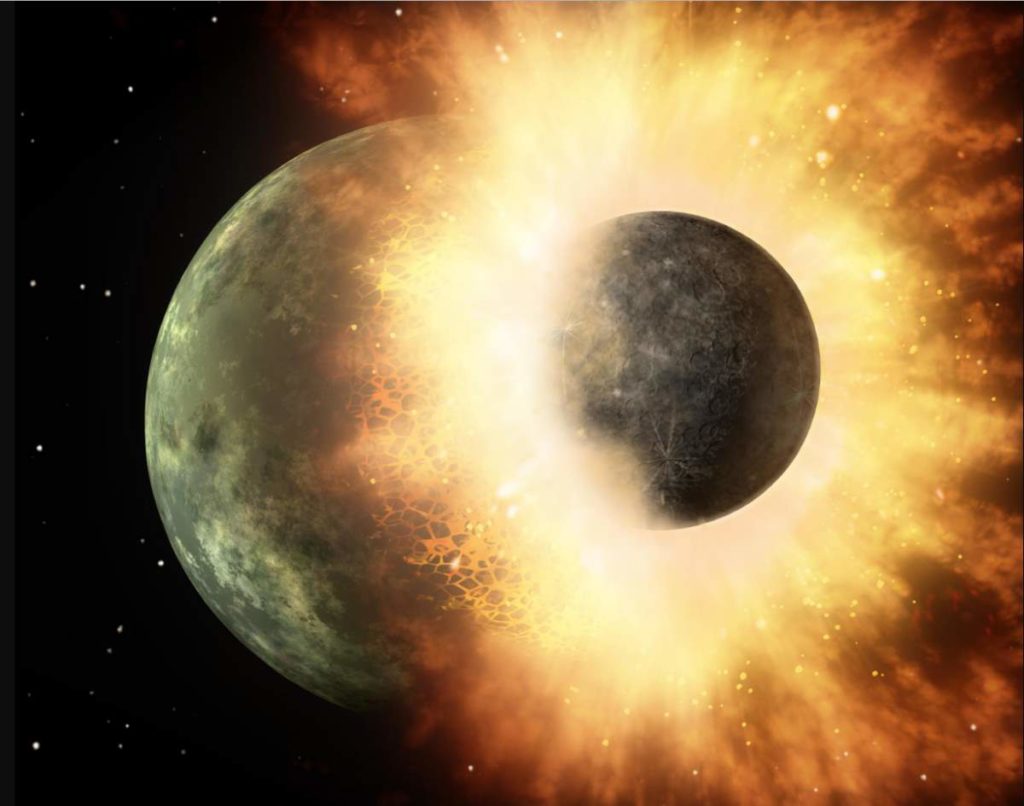
January 11: the first traces of water on the surface
The first traces of water can be found on the Earth’s surface.
January 20: the first “primitive” oceans
Primitive oceans can be found on the surface by January 20.
February 11: “Late Heavy Bombardment”
Stirrings in the outer solar system send countless asteroids on a collision course with the Earth and moon. The surface is pummelled by an incredibly high rate of meteorite impacts in what is called the “Late Heavy Bombardment”.
From looking at the moon (whose surface hasn’t experienced the erasing effect of plate tectonics and erosion) we can estimate that as many as 22,000 objects collided with the earth during this period, and approx 40 as large as the Chicxulub impactor.
April 3: life on Earth begins
It’s really, really primitive, though.
June 28: Photosynthesis
A strain of cyanobacteria has evolved a neat trick – the ability to produce energy from sunlight. Photosynthesis turns out to be incredibly useful, and the population booms. A byproduct of this process is a substance quite toxic to most forms of life at the time – oxygen.
August 6: First Eukaryotic cells
Life started to get a little bit more complicated and the first Eukaryotic cells appeared. Eukaryotic cells are cells that contain a nucleus and organelles (which sets eukaryotes apart from prokaryotes) and are enclosed by a plasma membrane. Organisms that have eukaryotic cells include protozoa, fungi, plants, and animals.
September 17: the Opisthokonts
The opisthokonts, the branch of life that will one day become fungi and animals just diverged from the rest of the eukaryotes.
October 3: the sexual reproduction begins
Another neat trick Eukaryotes have the ability of two individual cells to combine half their genetic material when creating offspring.
Sexual reproduction has many advantages over simple asexual reproduction, including increasing the rate at which beneficial traits can appear in a population.
November 5: the “Snowball Earth”
The balance of the climate tips towards cold. As ice caps form, they reflect sunlight, causing the temperature to drop even further.
At times, ice stretches as far as the equator, creating a Snowball Earth.
The Snowball Earth hypothesis proposes that Earth’s surface became entirely or nearly entirely frozen at least once, sometime earlier than 650 Mya (million years ago).
Additional factors that may have contributed to the onset of the Neoproterozoic snowball include the introduction of atmospheric free oxygen, which may have reached sufficient quantities to react with methane in the atmosphere, oxidizing it to carbon dioxide, a much weaker greenhouse gas, and a younger-thus fainter- Sun, which would have emitted 6 percent less radiation than today.
November 7: end of the Snowball Earth
CO2 levels 350 times higher than the present-day provide a blanket that can melt even the thickest ice caps.
November 15: the Avalon explosion
The complexity of animal life begins to increase rapidly. In the “Avalon Explosion” creatures with many brand new body plans and lifestyles begin to appear. Some of the first are jellyfish-like, such as Aspidella.
November 19: the Cambrian Explosion
Most major animal diversification appeared in the fossil record. Animals rapidly diversify and increase their complexity, evolving exciting new things like shells and exoskeletons. The variety of life began to resemble that of today.
November 27: the first jaws
Fish have developed the first jaws. The slow colonization of the land continues with Cooksonia, the first vascular plants. The barren planet is finally starting to look a little greener around the edges
November 30: Plants colonize the land
An explosion in the complexity of plant life has occurred and the continents are covered with the first forests of primitive trees, ferns, lycopods, and horsetails.
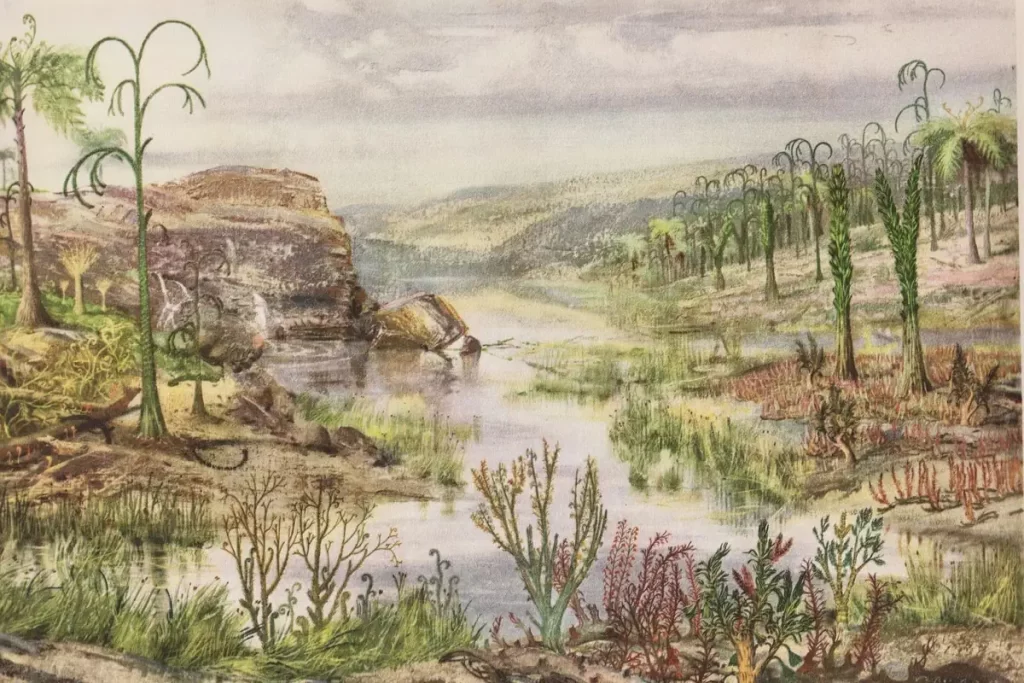
December 1: the first amphibians emerge from the water
Tiktaalik has just made its way onto dry land for the first time. Its appearance in the fossil record bridges the evolutionary gap between primitive aquatic animals and later tetrapods, as it has characteristics of both.
December 3: the transition from fish to land animal is complete
Perderpes is the first fully terrestrial tetrapod.
December 4: vast rainforests cover the earth
The thick forest cover leaves behind deep organic deposits that will eventually be found as wide-ranging coal deposits across Europe and North America.
First flying insects.
December 8: Pangaea
At the start of the Permian Period, the ancient continent Gondwana collided with Euramerica, forming (almost all of) the supercontinent Pangea. The mighty continent would live for 100 million years before it began to break up in the Jurassic.
December 11: “The Great Dying”
At the boundary between the Permian and Triassic, the greatest mass extinction in Earth’s history, the Permian-Triassic extinction event, colloquially known as the Great Dying, takes place, driving around 90% of species extinct. The extinction of plants reduced the food supply for large herbivorous reptiles and removed habitat for insects.
The Great Dying extinction list:
- 96% of marine species
- 70% terrestrial vertebrates
- 9 insect orders eradicated, 10 reduced in diversity
- 50% reduction in plant species diversity
December 12: the first dinosaurs
A group of small, upright Archosaurs also made it through the great dying. These small, nimble predators were the first of the Dinosaurs
Dinosaurs did not become dominant until the succeeding Jurassic Period.
December 15: Triassic-Jurassic extinction event
At the Triassic-Jurassic extinction event, 42% of terrestrial tetrapods went extinct, as did many species of plants.
With these ecological niches open, the stage is now truly set for the dinosaurs.
December 16: Jurassic period begins
Jurassic Period. It was characterized by a warm, wet climate that gave rise to lush vegetation and abundant life. Dinosaurs thrived as the first mammals (mostly very small herbivores or insectivores) and birds evolved. Ocean life was diversified.
December 17: Dinosaurs’ era begins
The earliest lizards have appeared and primitive placental mammals have evolved. Dinosaurs dominate both landmasses. Sauropods had become widespread. They are notable for the enormous sizes attained by some species, and the group includes the largest animals to have ever lived on land. Large marine reptiles inhabited the ocean, and pterosaurs were the dominant flying vertebrates. They ruled the skies, filling many ecological roles now taken by birds, and may have already produced some of the largest flying animals of all time.
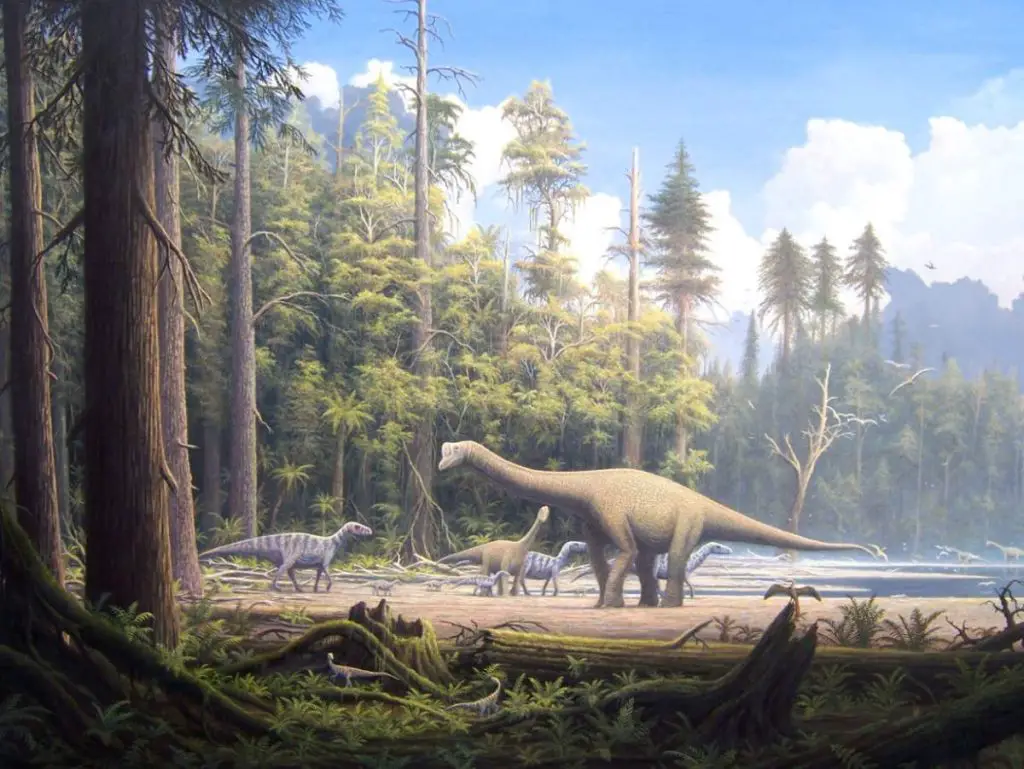
December 26: T-Rex
Arriving late in the Cretaceous, Tyrannosaurus was one of the largest predators of its time.
T-Rex’s lifestyle likely consisted of a mix of scavenging and active predation, using its immense jaw to grab food, which it tore up by shaking its head, rather than chewing.
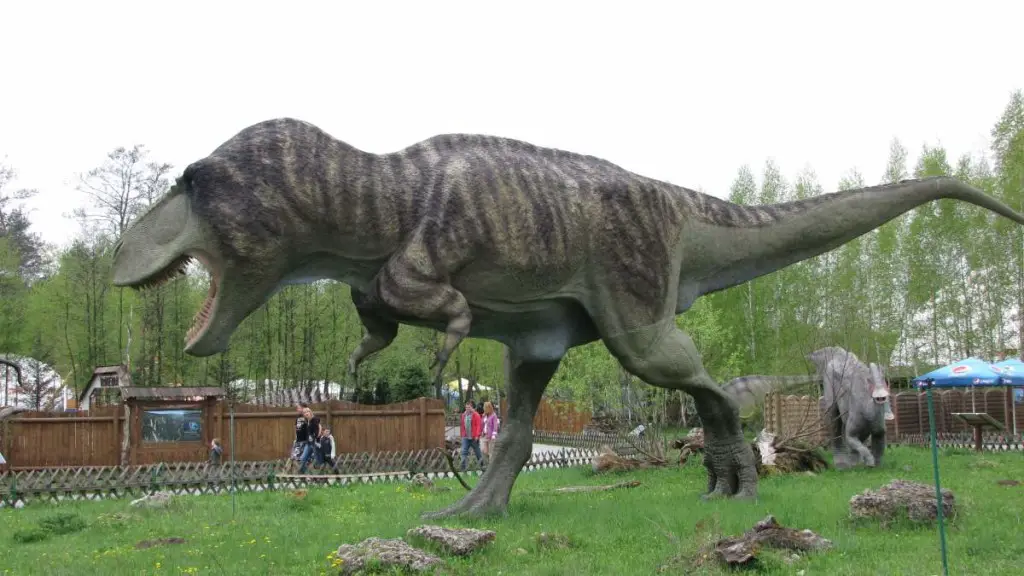
December 26: Chicxulub impact
The Chicxulub impactor, an asteroid or comet at least 10 kilometers (6 miles) in diameter impacted a few miles from the present-day town of Chicxulub in Mexico, at around 64,000 kilometers per hour (40,000 mph). The impact has created a crater (Chicxulub crater) more than 180 km (110 miles) in diameter, making it the third-largest known impact crater on Earth. The impact caused the Cretaceous-Paleogene extinction event, and 75% of all species, including dinosaurs (except avian dinosaurs), many marine reptiles, all flying reptiles, and many marine invertebrates became extinct. Some animals, including many small mammals, managed to survive.
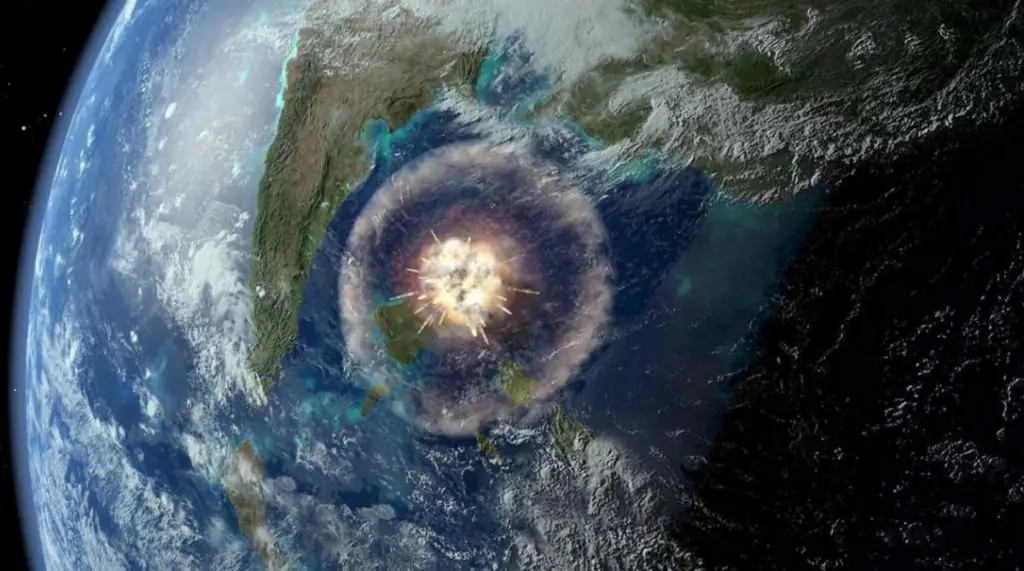
December 27: Big “terror” birds
Although the dinosaurs went extinct recently, the Age of Mammals didn’t take off immediately. Huge, flightless avian dinosaurs, the “terror birds” were the first to fill many of the niches that the dinosaurs vacated, and did not go extinct until 2.5 million years ago.
The Eocene has been quite warm, with CO2 levels at least 1000ppm and resulting temperatures warm enough for tropical forests to grow as far north as N. Europe and America. Without ice caps, sea levels were 100 meters (328 feet) higher than today.
December 28: First carnivora land mammals
The first mammals of the group Carnivora appear at this time, including the cat-like Feliforms, and the dog-like caniforms.
December 30
9:24 PM
The last common ancestor of the tailless Apes and the rest of the Primates lived around this time.
10:38 PM
Close to midnight, the last common ancestor of humans and gorillas lived at this time.
December 31
06:35 AM
The last common ancestor of humans and gorillas lived at this time.
12:34 PM
The last common ancestor of humans and chimpanzees lived around this time.
2:19 PM
Close relatives to Elephants, the South African Mammoth, the first of its genus evolves in southern and east Africa.
4:14 PM
Australopithecus walks onto the scene in Africa – upright and adapted for bipedalism.
6:35 PM
The Australopithecine woman who would one day be known as “Lucy” lives at this time in the Afar Depression in Ethiopia.
5:47 PM
H. Habilis has begun to use stone tools to give it an advantage in the changing climate of the Pleistocene.
8:20 PM
H. Erectus has mastered fire and can be found in far-flung areas such as Europe and Asia. Still no sign of modern humans.
11:13 PM
Likely a descendant of H. Erectus, the Neanderthals can be found in Europe at this time, before spreading into Asia.
With relatively large brains now, these hominids were quite complex, but they won’t be the only ones around…
11:36 PM
By this point, a distinct group of hominids, the H. Sapiens can be found.
For now, they share Earth with their close relatives, the other Hominids – Neanderthals and Denisovans.
11:46 PM
The Last Glacial Period has begun.
11:58 PM
The last of the distinct Neanderthals and Denisovans have vanished.
The only remaining extant species of our genus is the H. sapiens, modern humans.
Final few seconds
Some people refer to this geological time period as the “Anthropocene“.
In the final few seconds of the year, humankind has:
- Increased atmospheric CO2 by 40%
- Destroyed 80% of mammals, 50% of plants, and 15% of fish by biomass
- Caused extinction rates to increase by a factor of nearly 1000. The sixth and probably the biggest extinction event in the Earth’s history.
Welcome to the new year.
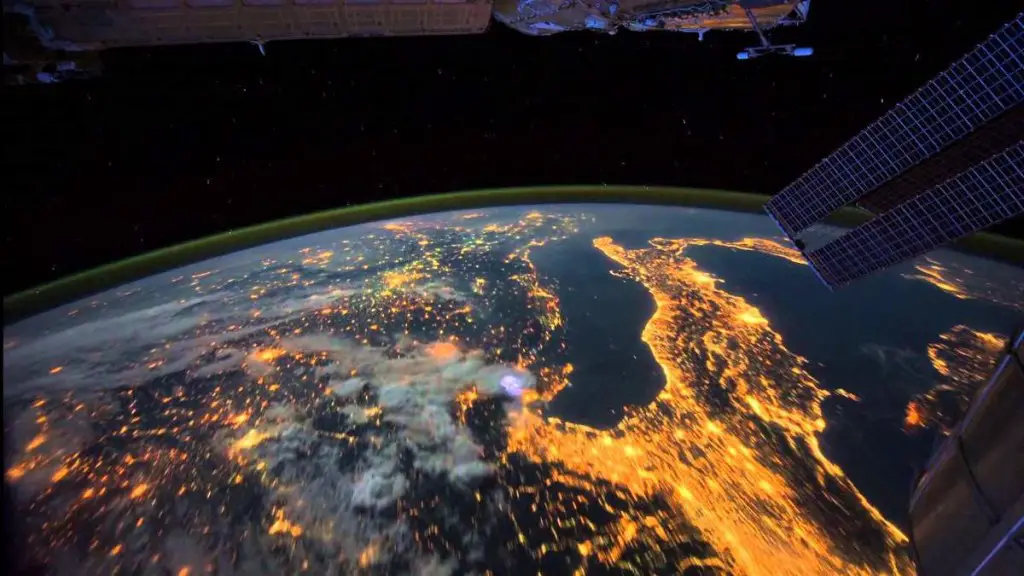
Sources
- “Year on Earth” on Chris Jennings’ official website
- @YearOnEarth Twitter Account
- Snowball Earth on Wikipedia
- Cambrian explosion on Wikipedia
- How Many Elephants are Left in the World in 2025? - August 17, 2025
- Moon Landings: All-Time List [1966-2025] - February 2, 2025
- What Is Max-Q and Why Is It Important During Rocket Launches? - January 16, 2025
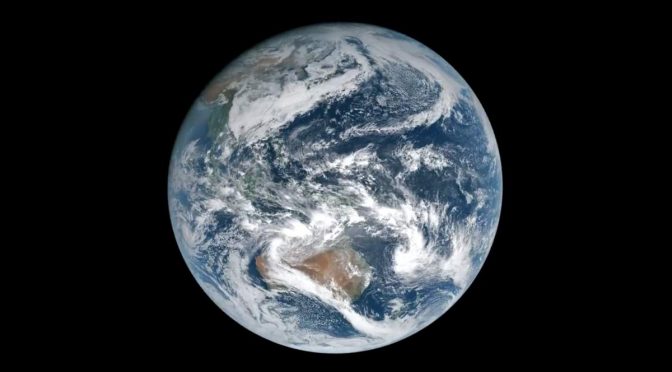

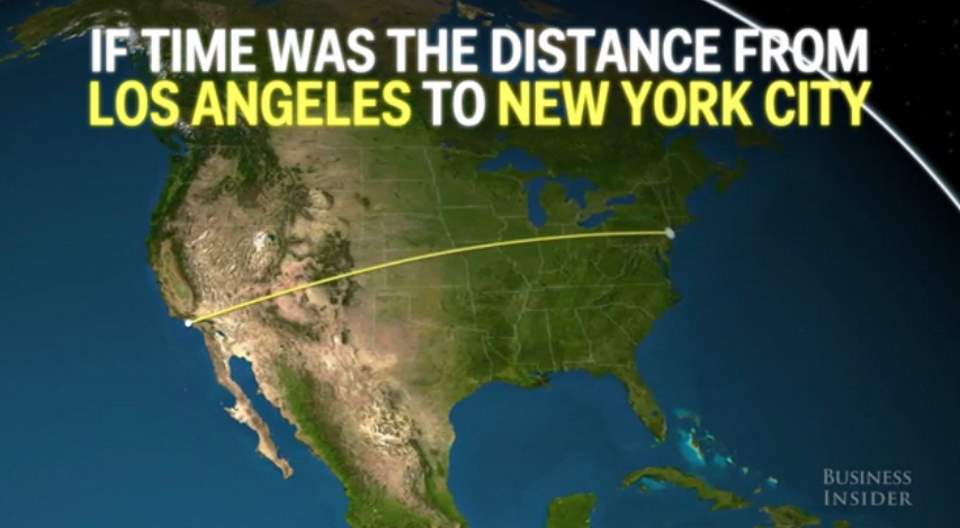
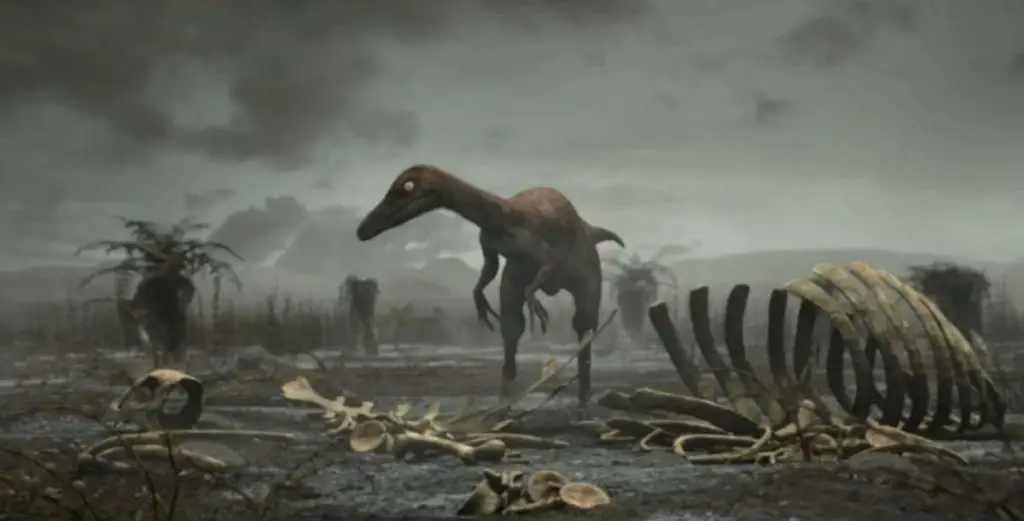
3 replies on “What If Earth’s History Compressed Into One Year”
Extremely interesting and scary. Four and a half billion years and continuing to evolve.
Excellent read. Note that several of the Dec 31st times are mislabeled PM when they should be AM.
What we have done – in just the last few seconds – is mind-blowingly terrible when you really consider this …